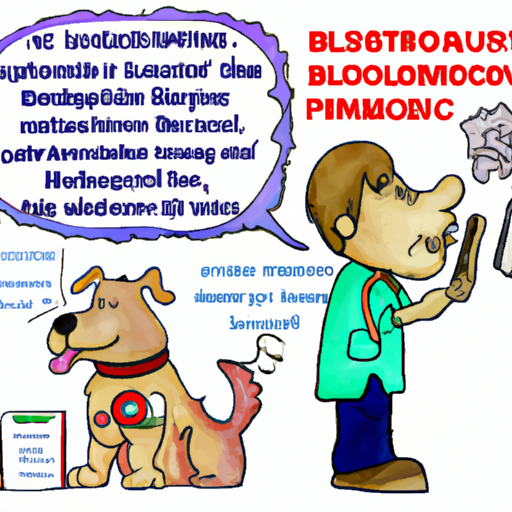A bloated stomach in dogs is not a rare occurrence. The condition, scientifically known as Gastric Dilatation-Volvulus (GDV), affects dogs of all breeds, sizes, and ages. Despite its prevalence, GDV remains a puzzling and frightening condition for many dog owners, primarily because of its sudden onset and potentially fatal consequences.
Table of Contents
- Understanding Bloat in Dogs
- Causes of Bloat
- Recognizing the Signs
- Risk Factors
- Prevention Measures
- Commonly Asked Questions
Key Takeaways
- Bloat in dogs is a medical emergency that requires immediate attention.
- The causes of bloat in dogs are multifaceted, with factors such as breed, age, and eating habits playing a role.
- Early detection and timely intervention can significantly improve the prognosis of dogs suffering from bloat.
Understanding Bloat in Dogs
Bloat, or Gastric Dilation Volvulus (GDV), is a condition where a dog’s stomach fills with gas and often twists. This gas buildup causes the stomach to expand like a balloon, resulting in extreme discomfort and potentially life-threatening complications. According to PetMD, bloat is the second leading cause of death in dogs after cancer.
Causes of Bloat
There is no single known cause of bloat in dogs. Instead, a combination of factors contributes to its occurrence. Here are some of the most common ones:
- Rapid Eating and Drinking: Dogs that eat or drink too quickly can swallow a lot of air, which can lead to gas accumulation in the stomach.
- Eating One Large Meal a Day: Feeding your dog a single large meal can cause the stomach to stretch, increasing the risk of twisting.
- Exercise After Eating: Exercising immediately after a meal can cause the stomach to twist, trapping the gas and food inside.
Recognizing the Signs
Recognizing the signs of bloat early can be the difference between life and death for your dog. Some of the symptoms include:
- Distended abdomen
- Non-productive vomiting (your dog tries to vomit but can’t)
- Restlessness
- Rapid shallow breathing
- Excessive drooling
If you notice any of these signs, it is crucial to rush your dog to the vet immediately.
Risk Factors
Certain dogs are more prone to bloat than others. Here are some risk factors to be aware of:
- Breed: Large breed dogs with deep chests, such as Great Danes, St. Bernards, and Weimaraners, are more at risk.
- Age: Older dogs are more likely to develop bloat.
- Family History: Dogs with a family history of bloat are at a higher risk.
Prevention Measures
While it’s impossible to completely prevent bloat, certain measures can reduce the risk:
- Feed your dog multiple small meals throughout the day.
- Encourage slow eating by using puzzle feeders or slow feeder bowls.
- Avoid rigorous exercise before and after meals.
- Maintain a healthy weight for your dog.
For more tips on maintaining your dog’s health, check out these articles on dog nutrition, exercise routines, and weight management.
Commonly Asked Questions
-
What breeds are most susceptible to bloat?
Large breeds with deep chests such as Great Danes, German Shepherds, Boxers, and Weimaraners are most susceptible. -
Can a bloated stomach in dogs resolve itself?
No, a bloated stomach in dogs is a medical emergency that requires immediate veterinary intervention. -
What should I do if I suspect my dog has bloat?
If you suspect your dog has bloat, seek immediate veterinary help. Time is critical in saving your dog’s life.
In conclusion, bloat in dogs is a serious and potentially fatal condition that requires immediate veterinary attention. By understanding the causes, recognizing the signs, and implementing preventative measures, you can protect your dog and provide them with a healthier, happier life.



